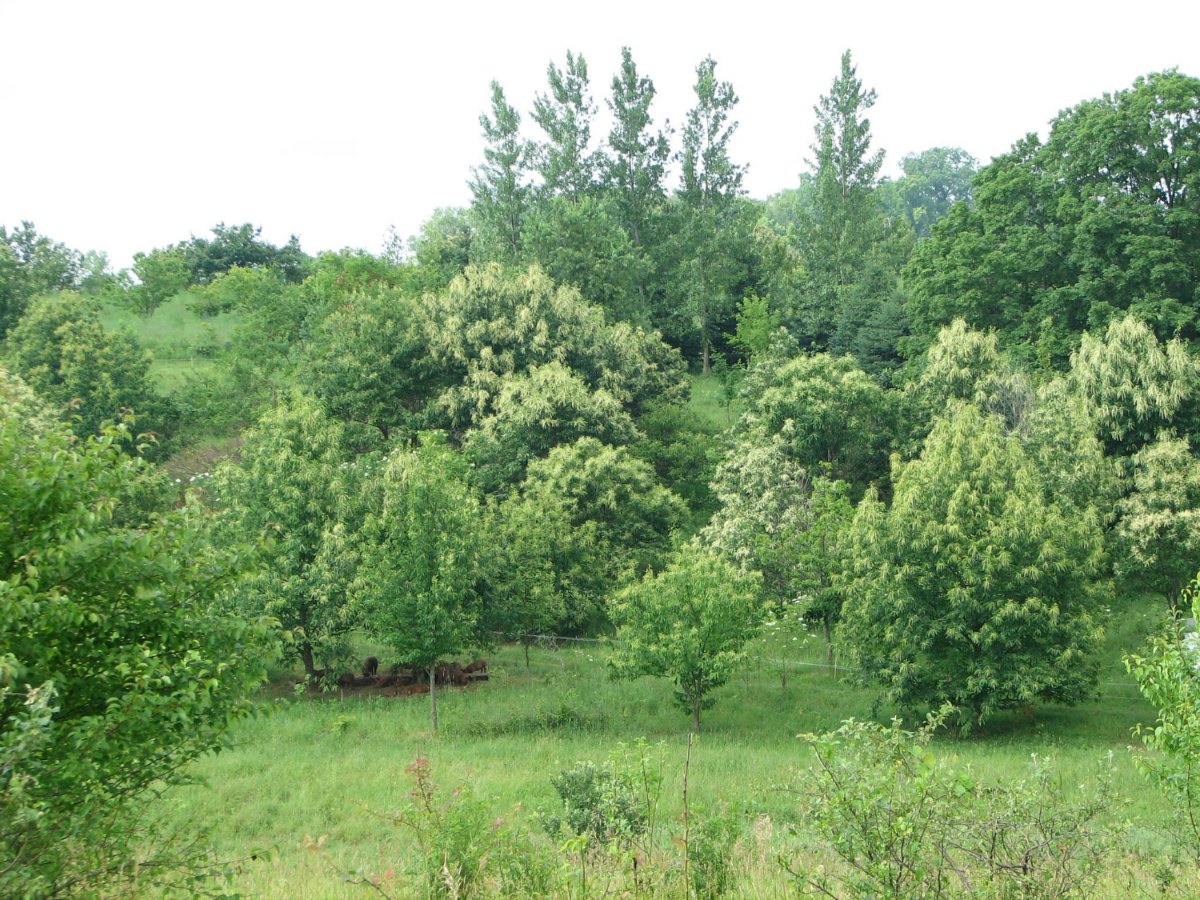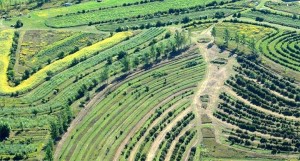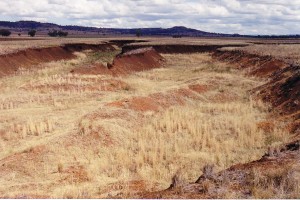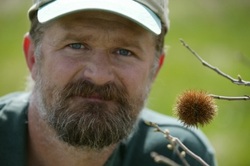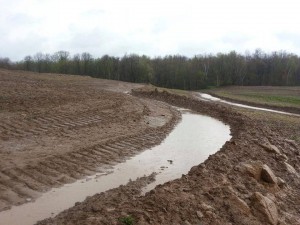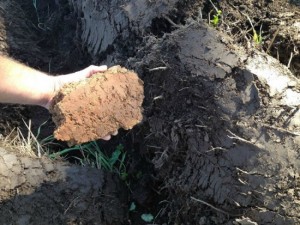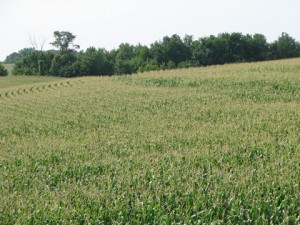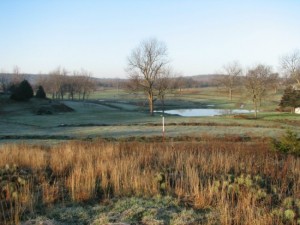What Mark Shepard has achieved at New Forest Farm is truly inspiring, admirable, provides hope and is enviable to anyone interested in nutrient dense, chemical free food production and consumption and most certainly to farmers – with its low inputs and high outputs. But it is also daunting, overwhelming and, honestly, in the past has actually made me switch off to a degree, because its production system is so far removed from our current beef cattle grazing operation or from the monoculture cropping enterprises of current agriculture. Do you ever feel a little like that?
It’s like I haven’t been able to bridge the gap on a ‘how to’ basis between what currently is and this pinnacle of agriculture of what could be. But let me describe it to you and see how we could apply some of the techniques to our farms.
New Forest Farm is a perennial permaculture farm in Wisconsin, USA that grows chestnuts, hazelnuts, pine nuts, apples, asparagus and other fruit, nuts and berries, as well as raising cattle, pigs and turkeys (see above image). It has been regenerated from what was a degraded, eroded, chemical intensive monoculture cropping farm. Rich, dark, humic soils have been built from degraded, hard setting, dead red-clay soils. All this regeneration and production has occurred without the use of pesticides or artificial fertilisers. The farm is “agriculture redesigned in nature’s image” as Mark described it to me.
Mark told me of an undergraduate study from some years ago that identified that certain systems on the farm produce 30% more calories/ha than the conventionally farmed corn property next door. Not only this, but all the foods produced from it provide the full suite of nutrients required for human and animal nutrition. More work, that is to be peer reviewed, is continuing on this topic.
Mark Shepard has taken permaculture as well as keyline farming design principles and practices to restore the soils, biodiversity, water cycles and production on his farm. There is now production from annual crops, ground level grasses, forbs and herbs, from shrubs and bushes, vines and of course from trees. It attempts to imitate the 40-60% area shading of the savannah environment, which is recognised as the ideal shading amount for maximum production.1
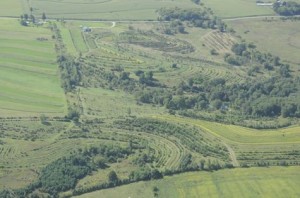
New Forest Farm’s Diversity
How though, is this intense and highly diverse production system relevant to current monoculture croppers on the Liverpool Plains around me, or to a grazier at Condobolin (with 16 inch rainfall) or in Western Australia or to a soybean grower in South America or Iowa in the U.S.?
A critical common point is water management! [private] It is this aspect of New Forest Farm that I would like to concentrate on today. I feel somewhat hesitant to pull out one aspect, as it is the whole system that makes New Forest Farm amazing, but I think it allows us to somehow get our head around it. We can also come up with a merged system of our current farming and grazing ideas and the full permaculture, keyline system. This system may not be as ecologically superior as New Forest Farm, but might suit what you practically want to do and will likely be an improvement on current systems. It may also be a good place to get started.
Keeping Rainfall on our farms
“We need to manage every drop of rainfall that lands on our farms and that rainfall should not leave our properties” Mark advocates. Increased water on our farms means increased productivity opportunities and it is the keyline design component of what Mark Shepard has done which maximises the water infiltration on his farm. It is also something that we can implement on our farms too. I have seen examples of this being of benefit in all kinds of climates.
What is keyline farming?
“Keyline farming is a set of principles, techniques and systems, which form the logical basis for a practical plan for the sustainable development of landscapes.”2 It uses the natural topography of the land to guide the placement and design of roads, fences, tree lanes, dams and irrigation, as well as the direction of crop plantings or land workings. It advocates soil regeneration as one of the main outcomes. “Keyline design is not a soil conservation system, but rather a soil creation system”,3 according to P.A. Yeomans, who originally developed the keyline farming principles.
Keyline design spreads the water from the valleys to the ridges via berms and associated swales, and water movement is further encouraged by the direction of deep soil workings. Keyline design delays the rainfall runoff time, giving more opportunity for it to infiltrate into, and percolate through, the soil. Now, our natural tendency is to think that we can’t make water travel uphill from the valleys to the ridges, but what keyline does is to have “the patterns of furrows/contours or swales to slope down from the valleys to lower areas of the adjacent ridges, increasing the moisture absorbed on the ridges and reducing the concentration of water in the valleys”.4
New Forest Farm by Air
As we know, the more moisture we infiltrate, the more production potential we have. “We want to delay the concentration and slow the velocity of rainwater wherever possible”5. “Keyline pattern cultivation spreads the flow out over a wide area, rendering it harmless. It also markedly increases the time of contact between rainfall and the soil. Water has more time to be absorbed.”6
This is in stark contrast to how land was treated during the 1970’s in many areas, including our farm. Land was contoured to run water off it – to concentrate runoff into ephemeral streams, increasing the speed of runoff. Although designed with the intention of reducing erosion, the result was often flash flood events at the bottom of these systems. In more recent times, downhill farming and rollover banks have been incorporated into these contour systems. Such contours were designed and built with good intentions but the result has sometimes been the opposite. This gully (below) at our place runs across the centre of our blacksoil plain, where 30 years ago the plain was completely unaffected by erosion. This gully is the result of contouring and water concentration upstream. Whilst we have restored much of the gully with grazing management, it continues to cut at the head. We currently have limited ability to change this outcome because the contoured lands are on neighbouring properties up the slope and due to the dispersive nature of the cracking black clay soils.
Gully on our black soil plain
There is a massive amount of water flow down this gully in a heavy rain event. We can readily hear it roaring from our house some 800m (1/2 mile) away after such an event. Imagine if all this rainfall was kept in the landscape and soils. With increasingly erratic weather patterns of longer dry spells interspersed with heavier rainfall events in Australia and the U.S. (and most likely other areas in the world), it is imperative that we keep as much of any rainfall and runoff on our farms as possible.
The Mooki river that runs near our farm rises at such speed after a rainfall event nowadays – much more so than when I first moved to this district 17 years ago. Granted, this is just my subjective observation, and we do seem to have more intense falls, but I do believe there are impacts of the soils ability to infiltrate the rainfall – which is influenced by general land management, ground cover and the state of the soils. Back to how we can fix this.
How are the swales designed?
Mark describes how he determines the placing of the berms that guide the water. There is one ‘key line’ developed, which is a contour line (along points of the same height), from which all other berms are created parallel. Mark explained to me a way to determine this keyline. During a runoff rainfall event, go to the lowest point on the farm and follow a non-permanent water course upstream until you arrive at the point where the water is no longer streaming. Place a marker at this point – this is what Mark calls a sweet spot. Do this with all ephemeral streams on the property. Such points across the farm can then be surveyed to be connected with a not-quite on contour (allowing water to flow) – which becomes the “key” line of the property and a channel or furrow is created along this line. All other furrows or berms, which will run water out to the ridgelines will then be created parallel to this keyline. Mark points out however, that this is not the Keyline as described by Yeomans. Yeomans describes the above technique on p 131-134 in his book ‘Water For Every Farm’ 2nd edition, but does not refer to it as the sweet spot.
Mark Shepard
The thought of any earthworks can seem daunting, so I quizzed Mark on whether major works were likely or necessary. Mark explained that the size of the swale and berm system is determined based on the catchment area that the swale accepts water from, the highest recorded rainfall event ever recorded, the types of rains that occur (regular, small gentle rains versus monsoon torrential rains), the soil type (clay versus sand) and the steepness of the slope. Flat, sandy land may not need any swales & berms, the cultivation and/or fencing pattern can merely be changed to follow the keyline pattern. Deep ripping (discussed more below) is done according to the new keyline pattern. The narrower the alleys are, the smaller the swales/berms can be. At New Forest Farm, the swales/berms were installed with a 2-bottom moldboard plow as the widest alley is only 30m (100ft). Some alleys are as narrow as 5m (15ft).
A dam is placed at each sweet spot – the size of which is designed to handle the flow from a heavy rainfall event, and from there the water is fed outwards along the berms to the ridges. These berms then form the line below which tree lanes are planted.
Day old berms after rainfall event
At New Forest Farm, Mark has a swale, berm, a line of trees and then an alley of pasture or crop, arranged down the slope in this order, which is then repeated. As the berms are created parallel to the keyline, they will eventually run off the contour of the land, and it is this “off-contour drift” that can be used to our advantage, as it directs water to the ridges. With traditional contour banks, all berms run with the contour of the land and the alley widths in between the berms converge and diverge, making equipment operation difficult. In the keyline system, the production areas between the berms are a set width and can be determined around machinery widths for practical operation.
Whilst I have explained the basics of the layout of keyline design here for the purpose of our understanding, if choosing to implement this on your farm, it is best that the keyline be determined by someone that has a deep understanding of such systems.
Deep Ripping
Adding to the infiltration that is made possible from the water management techniques I have described above, Mark Shephard also deep rips his soils with a subsoil ripper. This breaks up soil at depth, while leaving minimal disturbance at the soil’s surface. This allows aeration of the subsoil and increases infiltration into the soil. The ripping is done parallel to the keyline and occurs each 12 months in both pastured and cropped land, fitting in where practical, around farm workload and seasons.
Mark rips every 6 feet (1.8 metres) in his production alleys, but some people rip as close as 2 to 3 feet. I wondered about what effect this deep ripping might have on soil microbial life – particularly fungi. Mark explained that the good it was doing in aerating was resulting in the building of quality soil, so this is clearly not an issue. There is more overall good being done than not. Mark did comment however, that research would be interesting to determine how close are the ripping widths before they destroy more life than the gain they provide.
The combination of the water movement berms and the infiltration and aeration from the deep soil ripping creates an environment where soil builds, and can do surprisingly quickly. (Naturally this also needs to be combined with supportive grazing and cropping practices at the soil’s surface). The beauty of this system however is that if, for some reason, berms are breached in a big rain event and water over flows a berm – the water will only return to what was its natural movement, as it previously was.
what is the result at new forest farm?
The photo below shows the original soil from Mark’s farm (left) held up against the current soil (right). Mark explained that when he started 20 years ago, the soil was a sticky, greasy, red clay. He explained that it is still sticky when wet, but the red clay subsoil has been converted into topsoil. Which soil do you think would bring you higher yields?
The effects of more water in the soil and landscape are obvious with relation to producing more crop or more pasture, but I also quizzed Mark on what other outcomes he has seen. Excitingly, he reports a number of springs have opened up on his farm. Mark says that the extra rainfall infiltration achieved percolates through the soil until it eventually hits an impervious layer, and then moves sideways and out the slope at a lower point. The base flow of water from groundwater sources becomes more regular and predictable under keyline systems. This is a real indication of the amazing improvements in the hydrology of the land. It is rehydrating the whole landscape – not just the root zones.
Check first!
It should be noted that water management laws vary between countries and also between states, so please check what is required of you before doing any works that affect water flow.
What does this mean for us on our farms?
Whilst this is amazing that soil can be built relatively simply, not many of us with thousands of acres or more are likely to overhaul our whole farms in one go with earthworks to a keyline designed system due to the upfront associated work and costs and the uncertainties that we feel that prevent many of us from making change . Mark refers to costs of around USD$60 per acre in the US (AUD$24/ha). I do see the beauty of the Keyline system however, that if one wanted to create the earthworks on just one section of their farm, then this is quite feasible. Maybe you could start with one or a couple of valleys on the farm, monitor, and progress from there. This valley by valley approach is clearly an option, given the amazing effects that Mark Shepard has achieved at New Forest Farm, on just 110 acres. As described by Mark, it could be as simple as deep ripping along the keyline pattern.
Mark’s operation is complex in that the alleyways between berms vary from one another with regard to production, with anything from cereal crops to asparagus growing. The permaculture nature and biodiversity of this system helps in building the soil and health of the system, but may not be do-able for many of us due to climate or the lack of close markets for such produce.
Most likely your capital is tied up in machinery to suit a few crops or you enjoy the livestock that you run. Perhaps we can combine different practices. In a cropping situation we could create the diversity in this system with cover crops, whilst still producing the monoculture crop in between berms and tree lanes that your machinery and delivery systems are set up for. For a grazing operation, it becomes quite simple, in that rehydrating the landscape will help with perennial pasture growth and with appropriate grazing techniques, natural plant succession will occur to higher order species. Such succession is made easier under higher growth situations.
Swales and berms in a more conventional production system – a corn crop, with no land lost from production.
This above image is from Oklahoma, where Mark says they get one or two rainfall events per year mostly in the spring, and then nothing for 10 months.
He reports that the area was dominated by cacti (still remaining in foreground) and scrubby brush and within 2 yrs, they had lush, green pastures.
The images of New Forest Farm are of a lush ‘savannah’ like landscape, however the rainfall there is only 30 inches per year. It is a lot about the management and design as well as the rainfall per year. I have seen such water management designs applied to much more marginal country with great results. I will see if these farmers are interested in being part of my blog to share with you the possibilities in a different climate and in showing this, help you recognise that keyline offers opportunities in virtually all regions.
We can’t do anything in farming without water, and this is becoming increasingly more challenging with erratic rainfall patterns. Our rainfall here at Caroona for 2014 was around 2/3 of the annual average. Other recent years have been closer to the average but the rainfall has come in really heavy, large events, interspersed with longer dry spells. Managing this water is therefore becoming ever so critical.
I know where I would like to start on our farm – where I think we would get biggest bang for buck on the earthworks or deep ripping on a keyline.
What about you, can you see opportunities for your farm?
Do you have water run off your farm at times? This is an opportunity.
What would it take for you to start implementing a keyline system – however simple your model?
References
1. Shepard, M. Direct communication
5&3,6. Yeomans Keyline Systems and Concepts http://www.yeomansplow.com.au/yeomans-keyline-system.htm 4th Jan 2015
2&4. Yeoman. K. Keyline Designs http://www.keyline.com.au/ 4th Jan 2015

